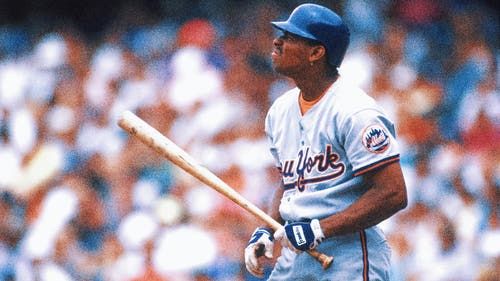
July 31 deadline is misleading
Ever since Aug. 6, 1998, the value of the July 31 trade line deadline has diminished.
That was when then-San Diego general manager Kevin Towers, wanting to block other contenders from being able to add a veteran left-hander – even though Atlanta was the only team with a better record and thus the only team with a chance to claim Randy Myers after the Padres – put in a waiver claim on the lefty.
Toronto happily awarded Myers to the Padres, who were stuck with $15 million remaining salary for a thread-bare reliever. He pitched in 21 games in the remainder of 1998, compiling a 6.28 earned-run average, and then spent the next two years collecting checks from San Diego for not pitching.
Gordon Ash, the Jays' general manager at the time, said if Towers had asked he would have warned him that any team that claimed Myers was going to get stuck with him.
Towers might have gotten stuck, but it is apparent the rest of baseball has heeded the warning.
The so-called July 31 trading deadline hasn’t been the same since.
Oh, there are trades being made in the moments leading up to that deadline but there also are plenty of trades made during the month of August.
Here’s the July 31 kicker — it's the deadline for deals to be made without a player having to clear waivers.
And if baseball executives seriously want to address their concerns about facing too many roadblocks to player movement because of contractual obligations, Major League Baseball would be wise to eliminate the July 31 deadline.
July 31, after all, became a target date when the June 15 trading deadline was eliminated after the 1985 season. Teams felt June 15 was too early to determine whether they were contenders.
Now baseball should dump the July 31 deadline, and leave teams with only one arbitrary line in the sand — the Aug. 31 requirement for a player to be in an organization and be eligible for the postseason.
As it is, trades can still be made in August if a player clears waivers or if he is claimed on waivers and the claiming team receives something in return.
Last August, for example, there were at least 18 deals made involving veteran players, including the eventual NL West champion Los Angeles Dodgers picking up second baseman Ronnie Belliard from Washington and starting pitcher Jon Garland from Arizona on Aug. 31, the deadline for acquiring players so that they can be eligible for the postseason roster.
And these are not merely short-term fixes. It was last August that the Dodgers also picked up Vicente Padillla and Minnesota acquired pitchers Carl Pavano and Jon Rauch, and then re-signed them for this year. Padilla and Pavano became key members of the rotation, and Rauch assumed the Twins’ closer role when Joe Nathan was lost for the season because of reconstructive right-elbow surgery.
The White Sox even took a gamble that paid off by claiming Alex Rios off waivers from Toronto, assuming a contract that still had more than $61 million due through 2014 with an option for 2015. The Angels acquired Scott Kazmir from Tampa Bay, in part because Kazmir was signed through 2011.
And there also were short-term additions, including the Mets shipping Billy Wagner to Boston, Texas acquiring catcher Pudge Rodriguez from Houston and Boston picking up shortstop Alex Gonzalez from Cincinnati.
Not only does the value of a player’s contract become an issue, but so does the ability of veteran players to control their own destiny either because they have negotiated a no-trade clause into their deal or they have reached 10-5 status — having spent at least 10 years in the big leagues and the last five with the same team — which translates into no-trade power.
A year ago, Roy Halladay used his power to keep Toronto from trading him because he wanted to go to Philadelphia, a wish the Jays eventually granted in December after Halladay squashed trade talks with other teams last August.
In July 2004, Colorado thought it dealt outfielder Larry Walker to the Texas Rangers, but Walker vetoed the move. In August, however, he consented to a trade to the St. Louis Cardinals, where he enjoyed the only World Series opportunity of his career. None of the three players the Rockies received in return had an impact in Colorado, but the $2 million in salary that the Rockies cleared from their books did. Scouting director Bill Schmidt was given the green light to sign prospect Dexter Fowler, who passed on a scholarship to Miami (Fla.) in return for a $925,000 bonus, most ever for a 14th-round draft choice.
That same August, Adam Dunn was dealt from Cincinnati to Arizona. Philadelphia acquired Jamie Moyer from Seattle in August 2006, and it was in August 2003 that San Diego sent outfielder Jason Bay and pitcher Oliver Perez to Pittsburgh for outfielder Brian Giles.
Most often, the August trades involve prospects for high-paid veterans, which is how Atlanta acquired Double-A pitching prospect John Smoltz from Detroit for Doyle Alexander in 1987, and three years later, Boston sent Double-A third baseman Jeff Bagwell to Houston for Larry Andersen.










